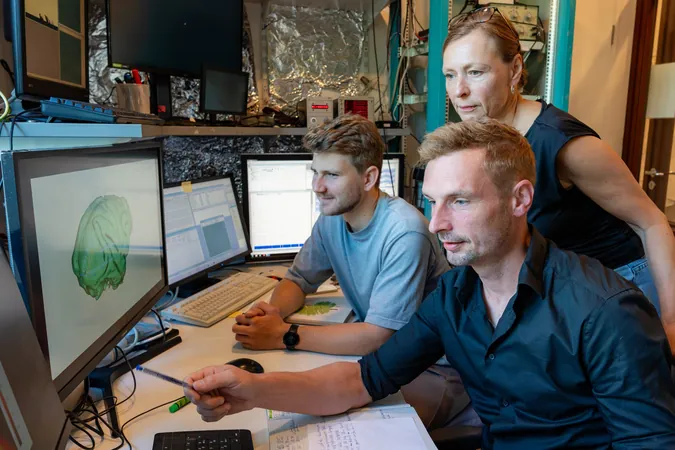
Mind Over Matter: How the Timing of Nerve Signals Shapes Our Brain's Focus
2025-09-01
Author: Li
Unlocking the Brain's Attention Mechanism
Imagine being at a lively cocktail party, surrounded by chattering voices and music, yet you're effortlessly honing in on one specific conversation. This phenomenon, known as the cocktail party effect, has intrigued researchers for years. Dr. Eric Drebitz from the University of Bremen explains this intrinsic ability: while background noises buzz around us, our brain smartly tunes into what we deem most important at that moment.
The Brain's Sneaky Survival Strategy
But how does our brain achieve this remarkable feat? Drebitz highlights a crucial survival mechanism: when faced with imminent danger—like a speeding car emerging from nowhere—our brain instantly prioritizes that urgent visual cue while pushing less critical inputs to the subconscious. Without this selective focus, our reactions would be sluggish, endangering our safety.
Timing is Everything: The Research Breakthrough
A groundbreaking study led by neuroscientists Andreas Kreiter and Drebitz has finally shed light on how this process unfolds in the brain. Their research, published in Nature Communications, reveals that the timing of nerve signals is vital for effective information processing. "For a signal to be meaningfully processed, it must arrive during a brief window when nerve cells are most receptive—about every 10 to 20 milliseconds," Drebitz clarifies.
An Experiment that Unveils the Mystery
To prove their theory, researchers conducted experiments with rhesus monkeys, who share a brain structure similar to ours. The monkeys were presented with visual tasks while being subjected to faint, unrelated electrical stimuli. Astonishingly, these artificial signals only impacted the monkeys’ nerve activity when they coincided with the nerve cells' peak receptive moments. As a result, their performance dipped, demonstrating how even irrelevant signals can hijack focus.
Revolutionizing Understanding and Treatment of Brain Disorders
These findings hold transformative potential not just for neuroscience but also for medicine. As Drebitz notes, understanding the nuances of selective information processing is integral to addressing disorders like Alzheimer's and ADHD, which hinder the ability to process relevant information.
The Future: Merging Science with Technology
Additionally, these insights are poised to revolutionize brain-computer interface technologies, which rely on precise timing to communicate seamlessly with the brain. Such advancements may lead to more efficient artificial intelligence systems inspired by the brain's remarkable ability to manage information.
The marriage of neuroscience and technology could unlock entirely new dimensions of human experience, broadening our understanding of attention and enhancing cognitive performance.


 Brasil (PT)
Brasil (PT)
 Canada (EN)
Canada (EN)
 Chile (ES)
Chile (ES)
 Česko (CS)
Česko (CS)
 대한민국 (KO)
대한민국 (KO)
 España (ES)
España (ES)
 France (FR)
France (FR)
 Hong Kong (EN)
Hong Kong (EN)
 Italia (IT)
Italia (IT)
 日本 (JA)
日本 (JA)
 Magyarország (HU)
Magyarország (HU)
 Norge (NO)
Norge (NO)
 Polska (PL)
Polska (PL)
 Schweiz (DE)
Schweiz (DE)
 Singapore (EN)
Singapore (EN)
 Sverige (SV)
Sverige (SV)
 Suomi (FI)
Suomi (FI)
 Türkiye (TR)
Türkiye (TR)
 الإمارات العربية المتحدة (AR)
الإمارات العربية المتحدة (AR)